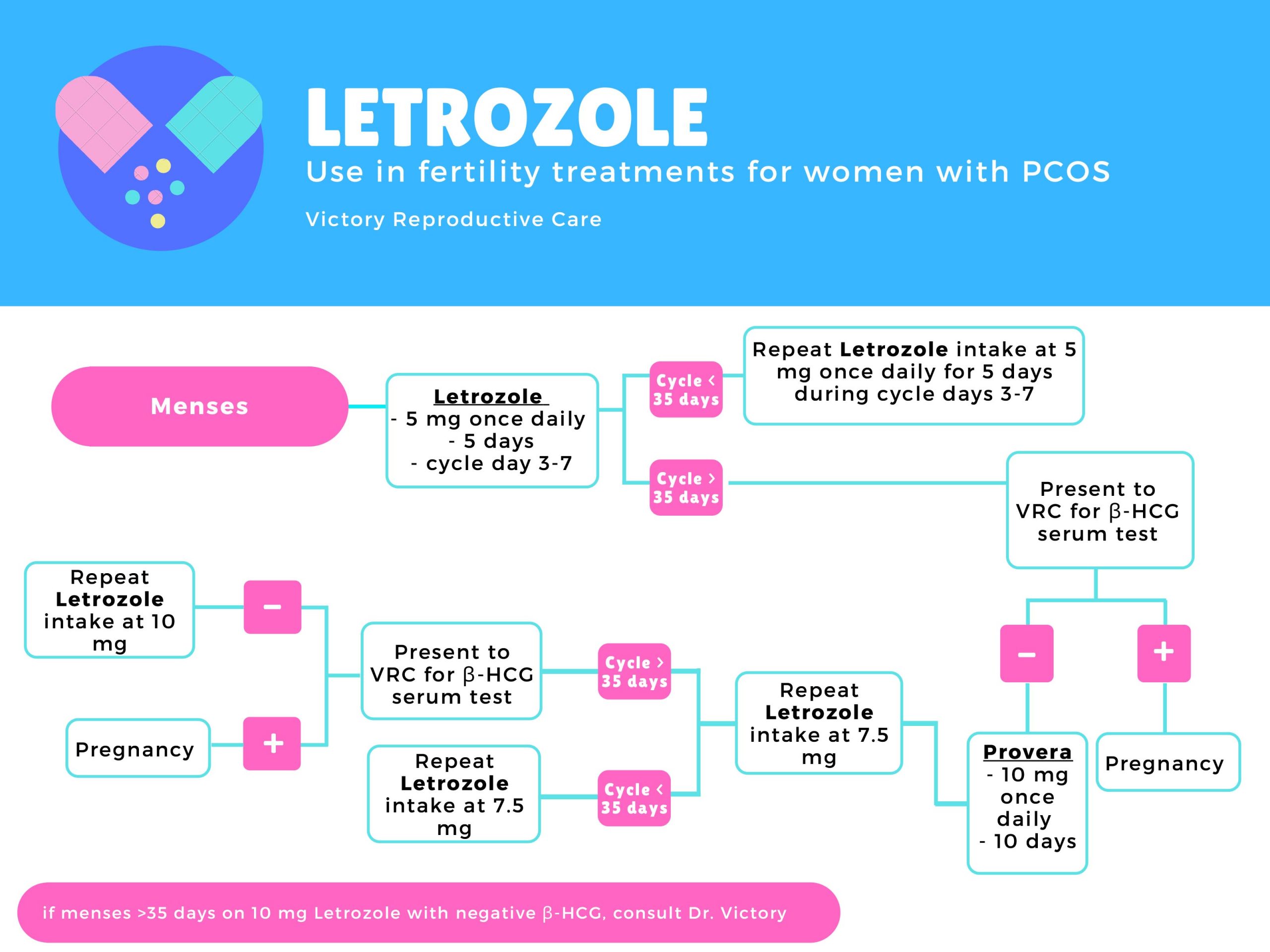For women who are not ovulating regularly, the goal of treatment is to mature and ovulate a single egg—this is known as ovulation induction. In some cases, where ovulation of multiple eggs is desirable this can also easily be achieved.
OVERVIEW
WHY IS IT DONE
This technique is most often used in women with (polycystic ovarian syndrome), but can be used for many others including male factor infertility, endometriosis, advanced maternal age.
The BASICS
Ovulation induction with letrozole
Letrozole is an oral fertility medication. It can be used to induce ovulation in women who don’t ovulate, or to produce multiple eggs in women who already ovulate on their own. It is an alternative medication for those who have experienced significant side effects with clomiphene citrate (hot flashes, mood swings, thinning of the endometrium). It is currently the first-line agent for women with PCOS. In a head-to-head comparison Letrozole led to a 27.5% live birth rate with six months of use compared to 19.1% with clomid for the same period of use.
WHAT TO EXPECT
How to take letrozole
Letrozole is a tablet that a woman takes by mouth for 5 days, typically beginning on day 3 of her menstrual cycle. Before you start taking Letrozole, your physician must confirm that you are not pregnant by performing a baseline ultrasound, pregnancy test, and hormone tests. The initial prescribed dosage of letrozole is 2.5 to 5 mg (one or two tablets) daily at bedtime, or as prescribed by your physician. Monitoring of egg development is usually done with E2 and LH blood hormone tests and ultrasound scans of the ovaries to determine when the egg is mature, though you can also simply monitor at home with an ovulation predictor kit. An injection of an ovulation induction agent such as Ovidrel or Pregnyl is then sometimes recommended to trigger the release of your egg, or you can wait for a natural LH surge to release your egg. One of the biggest benefits of a trigger shot is the increased ability to correctly time intercourse at home or insemination in the office. If you are having timed intercourse, your physician will instruct you to have intercourse on the day of the trigger shot and then daily to increase potential chances for conception.
The BASICS
Ovulation induction with clomiphene citrate
Clomiphene citrate is the original oral ovulation induction agent. It can be used to induce ovulation in women who don’t ovulate, or to produce multiple eggs in women who already ovulate on their own. While it is no longer the first line therapy for PCOS patients, it still has a role in letrozole failures and is still the treatment of choice for women hoping to produce 2-3 follicles from their stimulation.
WHAT TO EXPECT
How to take clomiphene citrate
Clomiphene citrate is a tablet that a woman takes by mouth for 5 days, typically beginning on day 3 of her menstrual cycle. Before you start taking Clomid, your physician must confirm that you are not pregnant by performing a baseline ultrasound, pregnancy test, and hormone tests. The initial prescribed dosage of clomiphene is 50 to 100 mg (one or two tablets) daily at bedtime, or as prescribed by your physician. Monitoring of egg development is usually done with E2 and LH blood hormone tests and ultrasound scans of the ovaries to determine when the egg is mature. An injection of a triggering agent such as Ovidrel or Pregnyl is then sometimes recommended to trigger the release of your egg, or you can wait for the egg to release naturally. One of the biggest benefits of a trigger shot is the increased ability to correctly time intercourse at home or insemination in the office. If you are having timed intercourse, your physician will instruct you to have intercourse on the day of the trigger shot and then daily to increase potential chances for conception


